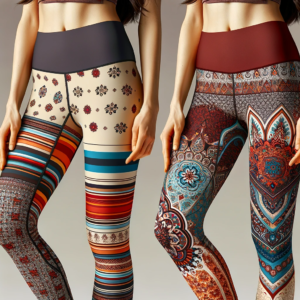BJJ Gi’s, also known as Brazilian Jiu Jitsu Gi’s or Kimonos, are the traditional uniform used in Brazilian Jiu Jitsu. It is a two-piece garment consisting of a jacket and pants that is typically made from cotton or a cotton-polyester blend. The Gi is designed to be durable and withstand the rigors of BJJ training and competition.
History of BJJ Gi’s
The origins of the BJJ Gi can be traced back to the traditional Japanese martial art of Judo, which was brought to Brazil by Mitsuyo Maeda in the early 20th century. Brazilian Jiu Jitsu was developed from Judo, and the Gi was adapted to suit the different techniques used in BJJ. Today, the Gi is an integral part of BJJ training and competition, and many practitioners take pride in their collection of Gis.
Materials and types
Materials used in BJJ Gi’s BJJ Gi’s are typically made from cotton or a cotton-polyester blend. Some Gi’s may also feature additional reinforcements in certain areas, such as the knees, to make them more durable. Recently, some companies have started using alternative materials such as bamboo or hemp to make their Gi’s more eco-friendly.
Types of BJJ Gi’s
- Lightweight Gi
- Heavyweight Gi
- Competition Gi
- Training Gi
Lightweigh Gi
A lightweight BJJ gi is a type of gi that is designed to be lightweight and highly breathable. It is made using lightweight materials, such as cotton or a cotton-polyester blend, and has a slim cut to maximize mobility.
Lightweight BJJ gi’s are perfect for athletes who train and compete in hot and humid climates or who prefer a more lightweight and mobile uniform. They allow for greater movement and are less restrictive, making them ideal for practitioners who favor a faster-paced, more dynamic style of grappling.
Heavyweight Gi
A heavy BJJ gi is a type of gi that is designed to be durable and long-lasting. It is made using heavyweight materials, such as thicker cotton or a cotton-polyester blend, and has a looser cut to allow for greater comfort and ease of movement.
Heavy BJJ gi’s are perfect for practitioners who prefer a more traditional, slower-paced style of grappling or who are looking for a gi that will stand up to heavy use over time. They are also popular with larger and stronger athletes, who benefit from the added weight and strength of the gi.
Competition Gi
A competition BJJ gi is a type of gi that is designed specifically for use in tournaments and competitions. It is made to meet strict regulations set forth by governing bodies, such as the International Brazilian Jiu-Jitsu Federation (IBJJF), and is often lighter and more form-fitting than traditional gi’s.
Competition BJJ gi’s typically feature a tighter fit, tapered sleeves, and pants that are cut to allow for greater range of motion. They are also made using lightweight and breathable materials, such as pearl weave or ripstop, to help keep athletes cool and comfortable during competition.
Training Gi
A training BJJ gi is a type of gi that is designed for everyday use during training sessions. It is typically made using high-quality materials that are both durable and comfortable, such as cotton or a cotton-polyester blend, and features a looser cut to allow for greater mobility. Training BJJ gi’s are perfect for regular training sessions as they are built to withstand the rigors of training while providing comfort and breathability. They often feature reinforced stitching and stress points to ensure long-lasting durability and may come in a range of colors and designs to suit personal style preferences.
How to choose the right BJJ Gi
When choosing the right BJJ Gi, there are several factors to consider such as size and fit, brand and quality, and price range. It’s important to ensure a proper fit by taking into account the specific measurements provided by the manufacturer and any potential shrinkage that may occur after the first wash. Researching and reading reviews can also help ensure that the Gi is made from high-quality materials and can withstand the rigors of training and competition. Finally, it’s important to follow the care instructions provided by the manufacturer to ensure the longevity of the Gi and avoid damaging the fabric or affecting the fit.
It’s also important to consider the type of BJJ Gi that is suitable for your needs, such as lightweight or heavyweight, training or competition Gis. Lightweight Gis are ideal for hot weather and training, while heavyweight Gis are more durable and suitable for competition. Training Gis are also available for those who want a balance between durability and comfort.
In addition, some brands offer eco-friendly options made from materials such as bamboo or hemp. These options can be a great choice for practitioners who value sustainability and want to reduce their environmental impact.
Overall, choosing the right BJJ Gi can make a significant difference in your training and performance. By taking the time to research and consider the factors mentioned above, you can find a Gi that fits well, is made from high-quality materials, and is cared for properly, ensuring that it lasts for years and becomes a treasured part of your collection.
How should BJJ gi fit?
- The fit of a Jiu Jitsu gi is important for both comfort and performance in training and competition. Here are some general guidelines for how a Jiu Jitsu gi should fit:
- The jacket should fit snugly around the body, without being too tight or too loose. There should be enough room to move freely, but not so much that the jacket hangs off the body.
- The sleeves should extend to the wrists when the arms are extended straight out in front of the body. The cuffs should be loose enough to allow for movement, but not so loose that they slide up the arm.
- The pants should fit snugly around the waist and hips, with enough room to move freely. The length of the pants should reach the ankles, but not bunch up at the bottom.
- The pants should also have a drawstring waistband to ensure a secure fit.
Gi or no gi BJJfor beginners
Brazilian Jiu-Jitsu (BJJ) is a martial art that offers a multitude of benefits to those who practice it, including improved fitness, self-defense skills, and stress relief. As a beginner, you may be wondering whether you should start your BJJ journey with gi or no gi training. In this article, we will discuss the pros and cons of each style to help you make an informed decision.
Gi BJJ is the traditional style of BJJ and involves training and competing in a gi, which is a uniform consisting of a jacket, pants, and belt. Here are some of the pros and cons of gi BJJ:
Pros:
- The gi provides many grips and controls, which can make it easier for beginners to understand the mechanics of the sport.
- Training in a gi can improve your grip strength and help you develop a more technical and precise game.
- The gi can provide some level of protection from scratches and mat burn, which can be helpful for beginners who are still getting used to the sport.
Cons:
- The gi can be hot and uncomfortable to train in, especially in warmer weather.
- The gi can be expensive, which may be a barrier for some beginners who are not yet committed to the sport.
- The gi can be difficult to maintain and wash properly, which can be time-consuming and inconvenient.
No gi BJJ, on the other hand, involves training and competing without a gi. Practitioners typically wear shorts and a rash guard or t-shirt.
How to wash jiu jitsu gi?
Even if the BJJ gi is made of thick, durable material that can withstand the rigorous training and grappling that takes place during jiu jitsu sessions. However, after a few training sessions, the gi can become dirty and smelly, making it important to wash it properly to maintain its quality and longevity.
- Check the label for specific washing instructions to avoid damaging the gi.
- Pre-treat any stains with a stain remover before washing.
- Wash the gi in cold water with a gentle detergent and avoid fabric softener.
- Hang the gi to dry in a well-ventilated area, avoiding direct sunlight to prevent fading and shrinkage.
- Iron the gi on low heat if needed, avoiding embroidered or printed areas.
- Store the gi in a cool, dry place to prevent mold or mildew growth.
In conclusion, getting the perfect fit for your BJJ Gi is crucial for your performance and comfort during training and competition. Take accurate measurements, choose the right size, try it on, check the sleeves, pants, and collar, and account for shrinkage. With the right fit, you can train and compete with confidence and comfort.







